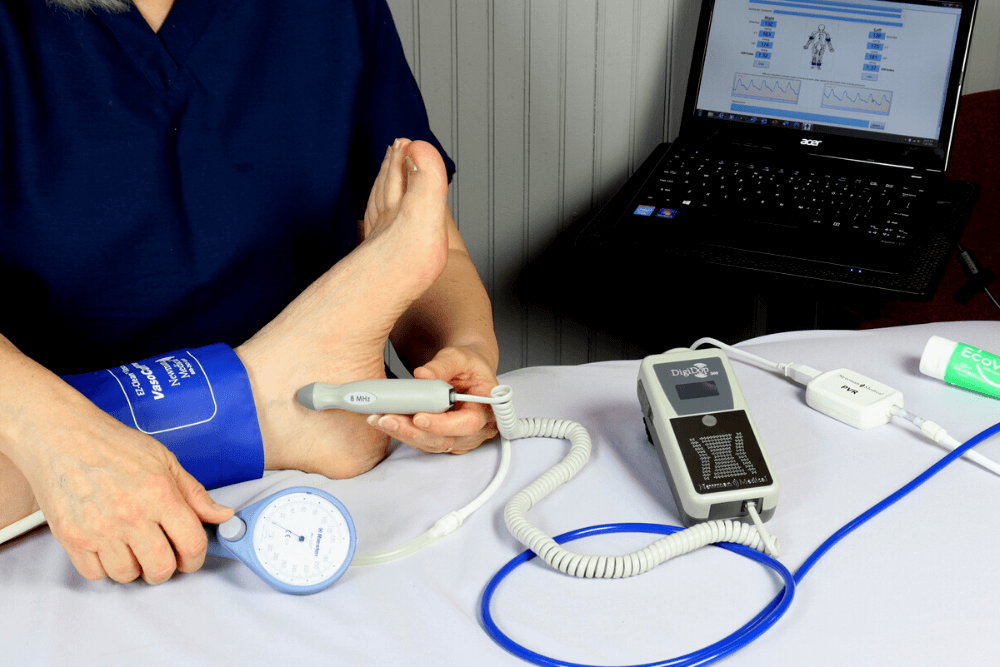The Vascular Doppler: A Great Tool in Your Hands

You know how useful your stethoscope can be – a “Doppler stethoscope” extends your capabilities with its ability to listen to the flow of blood cells in the smallest arteries or veins.
Most common uses:
- Checking arterial patency
- Before, during, and after surgery
- Evaluating vascular damage from trauma
- Peripheral artery disease (PAD) testing
- Sensitive pulse detector for ABI (ankle-brachial index) evaluation of PAD
- Penile flow in erectile disfunction (ED)** – especially before and after the new ultrasonic shockwave procedure.
- Find arterial disease just by listening for multiple sounds per heartbeat (multiphasic- good) vs. just one sound per beat (monophasic- not so good)
- Carotid evaluation (difficult without imaging)
- Noisy situations – Such as ambulances, helicopters – use noise canceling earphones (including fetal heart with OB probe)
- Veterinary practices
- Similar to human uses. Especially taking blood pressures during surgery
- Venous evaluation
- Locate blood vessels for sticks
- Check venous flow
- DVT evaluation
- Diagnose venous reflux and varicose veins
Normally the venous exams are done with imaging, but that requires much more expensive equipment and a trained sonographer.
Bottom line: If you are not using a vascular Doppler, get your hands on one and try it. You will hear things you’ve never heard before and with practice will be able to help your patients live longer and better lives. You will probably wonder how you ever got along without one.
**We do not have enough information on how the Doppler is used with penile flow procedures. If anyone has helpful information or a source they can provide that will shed more light on this topic, please contact [email protected]
Next:
Chapter Two: How to Use a Vascular Doppler
Chapter Three: What to Look for in a Vascular Doppler
